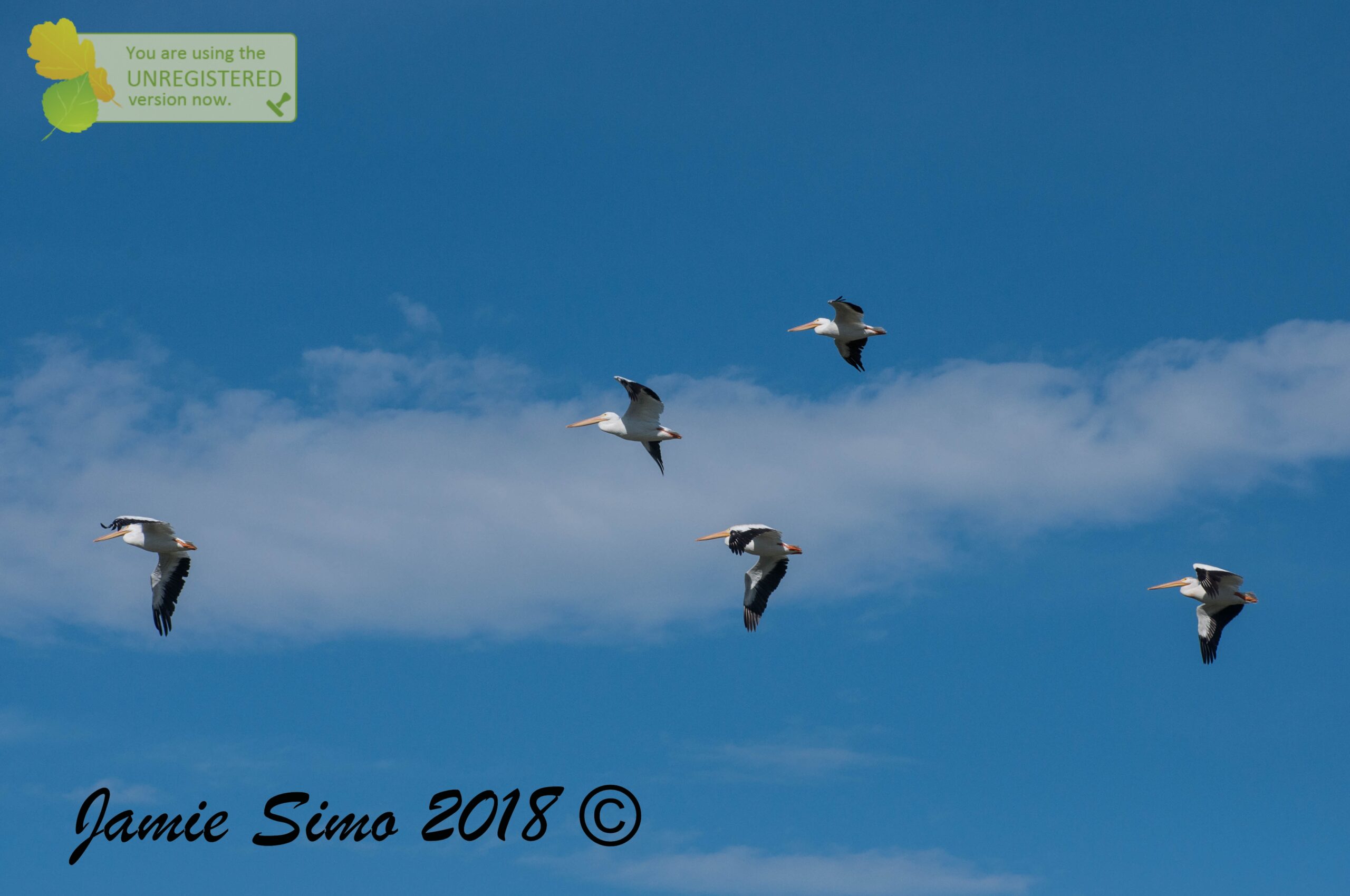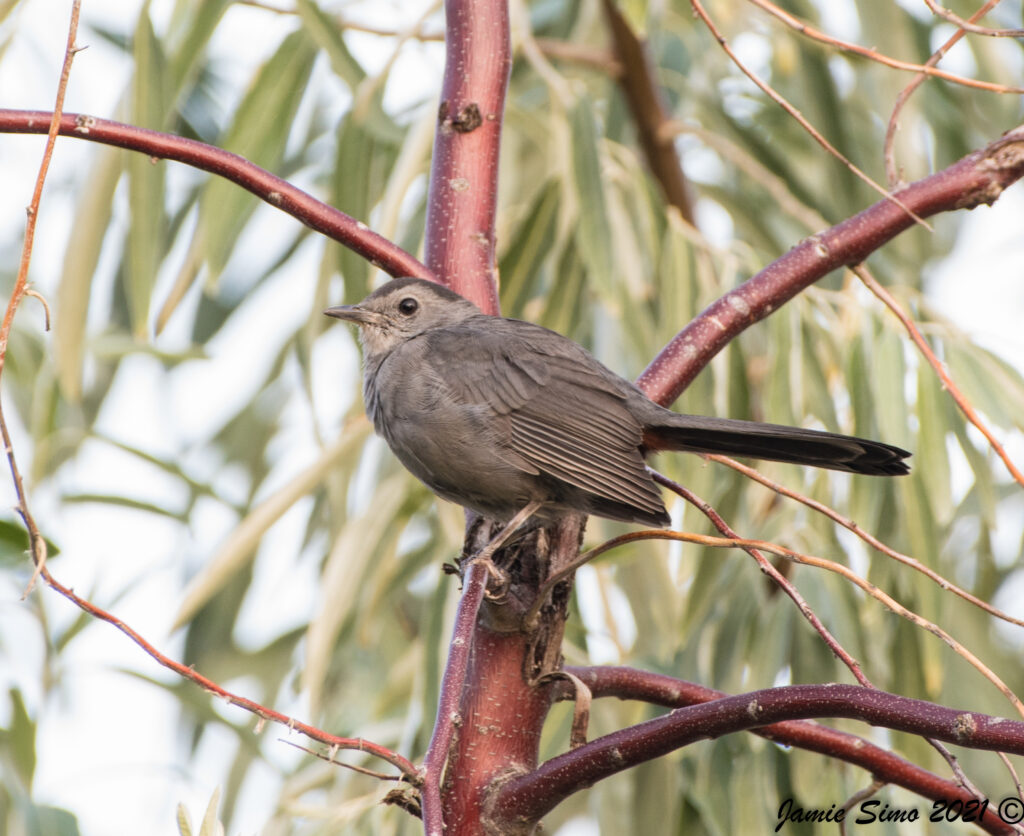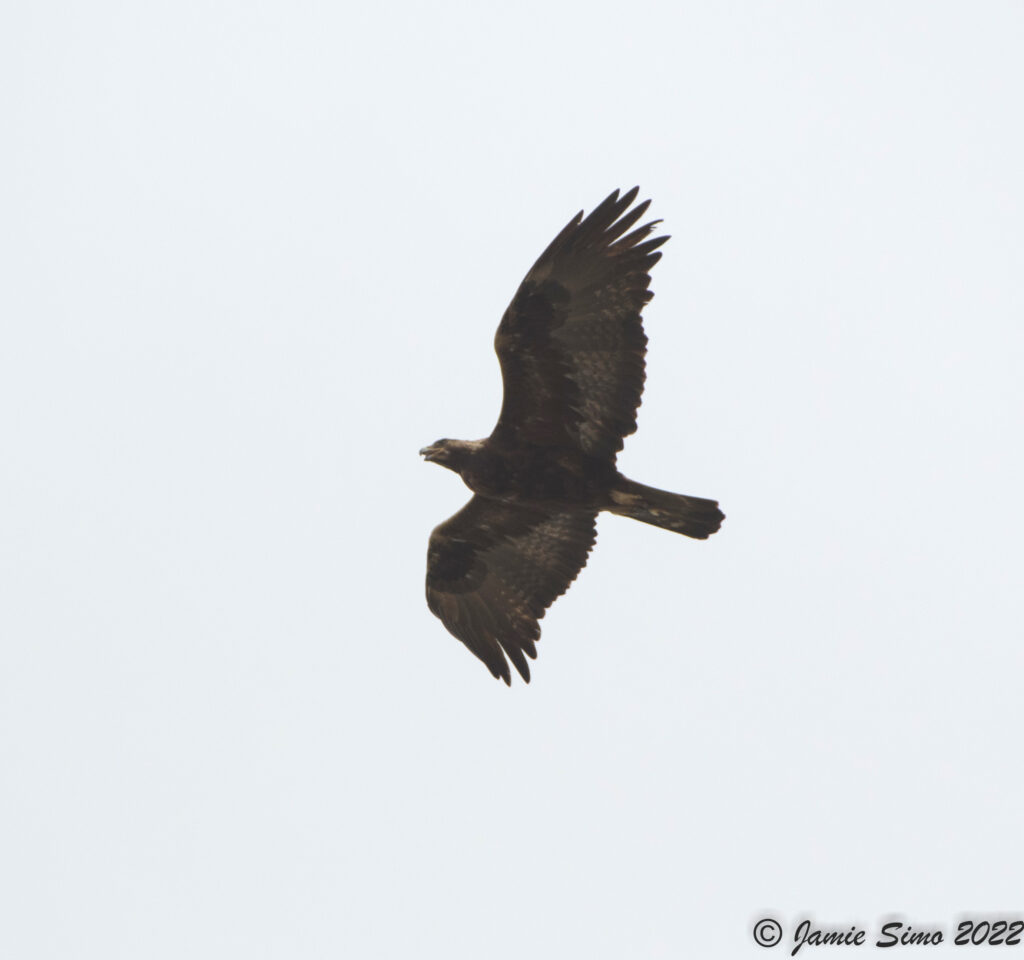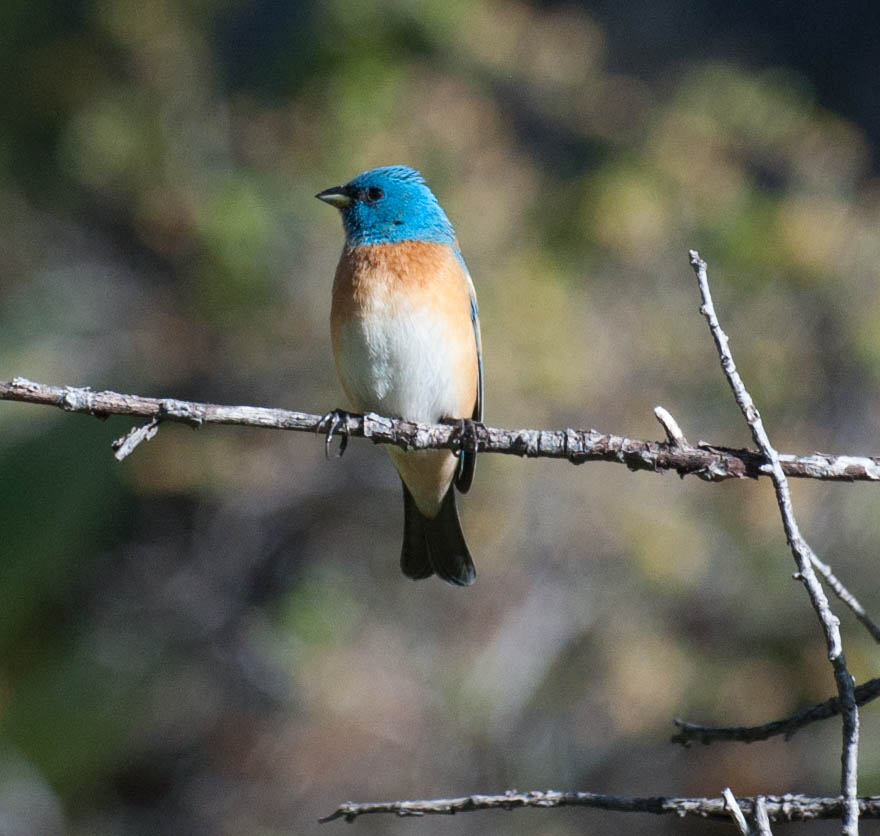
We had such a great response to our first FRBC bird walk to Waterton Canyon that we had enough people to host 2 walks and we still had a waiting list! Although the day started off pretty windy, it thankfully calmed down as we walked. Windy days can be some of the worst days to bird because small songbirds will hunker down to get out of the wind and it can be hard to hear birds singing.
Andrea’s Group:

Violet-green Swallow (left) versus Tree Swallow (right). Photo by Jamie Simo.
Waterton Canyon trailhead is located in Littleton, near the Audubon Center at Chatfield off of Waterton Road. The area has an interesting history with Kassler just across from the parking lot. Kassler was once an active town where employees of Denver Water lived and managed the dams and reservoirs of the canyon. The trail, once a thriving railroad, has a gentle incline and is widely used by bikers, joggers, families and even burros! (We stopped to visit with two burros and their owner who was preparing them for the summer circuit.) Note that if you plan to visit Waterton Canyon, the parking lot fills quickly on weekends, and from June 3-14 weekday access is closed for annual dust mitigation.
We barely started down the trail before birds were appearing left and right. One thing I really appreciated about our group was the team effort in finding birds, helping others to find the exact location of a bird, and identifying birds. The group shared a ready camaraderie – though we didn’t know each other, you’d have thought we were old friends. Oh, the magic of birding! And with new birds coming into view around every bend and sometimes every few steps, we were thrilled at the great birds we saw (Lazuli Buntings, Yellow Breasted Chats, Yellow Warblers and Cedar Waxwings to name a few), and thrilled to share it with each other.
We got some great views of Tree Swallows and Violet-green Swallows and took some time to learn their distinguishing field marks. Both of these swallows have white undersides. In flight, the white of the Violet-green Swallow wraps onto the sides of the rump; the Tree Swallow has a small crescent on each side of the rump, not nearly as noticeable as the white rump of the Violet-green Swallow. The white on the Violet-green Swallow also extends well into the face – above the eye and covering the cheek; the Tree Swallow’s blue hood extends through the eye, forming a sharp contrast between the blue above and white below. The Violet-green Swallow has a shorter tail with narrower wings that extend beyond the tail, noticeable in flight, and especially while perched; the Tree Swallow has broader wings and a longer, notched tail.
The morning sun cast a yellow glow on the breast of a bird that puzzled us us until we determined we really were seeing blue on it’s back. A Woodhouse’s Scrub-Jay!
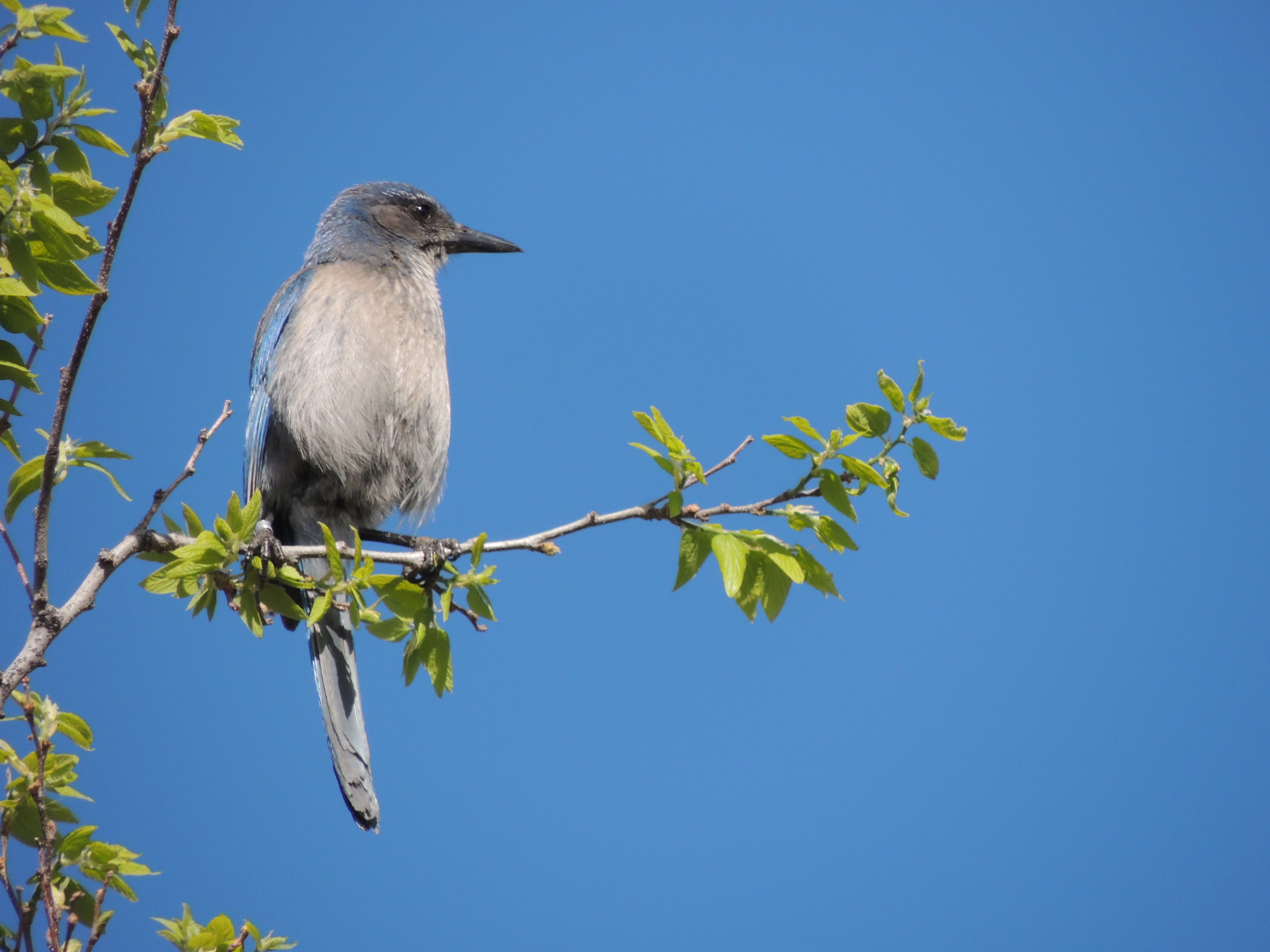
Woodhouse’s Scrub-Jay. Photo courtesy of Kathleen Deckler.
Toward the end of our walk, an interesting sparrow was seen foraging on the ground and perching in the shrubs. The face had bold coloring – white, rust and black, and the outer tail feathers were white. Any guesses? It was a Lark Sparrow!
Waterton Canyon–from Waterton Rd to overhead pipes, Jun 1, 2019
28 species
Canada Goose 4
Mallard 1
Common Merganser 5
Turkey Vulture 4
Red-tailed Hawk 1
Western Meadowlark 1
White-throated Swift 1
Black-chinned Hummingbird 1
Broad-tailed Hummmingbird 2
Belted Kingfisher 1
Northern Flicker 3
Olive-sided Flycatcher 1
Say’s Phoebe 1
Western Kingbird 1
Woodhouse’s Scrub Jay 3
Violet-green Swallow 2
Northern Rough-winged Swallow 1
Barn Swallow 3
Tree Swallow 4
House Wren 4
Blue-gray Gnatcatcher 2
Cedar Waxwing 4
Yellow Warbler 8
Yellow-breasted Chat 2
Spotted Towhee 6
Lark Sparrow 1
Lazuli Bunting 6
Bullock’s Oriole 2
Jamie’s Group:
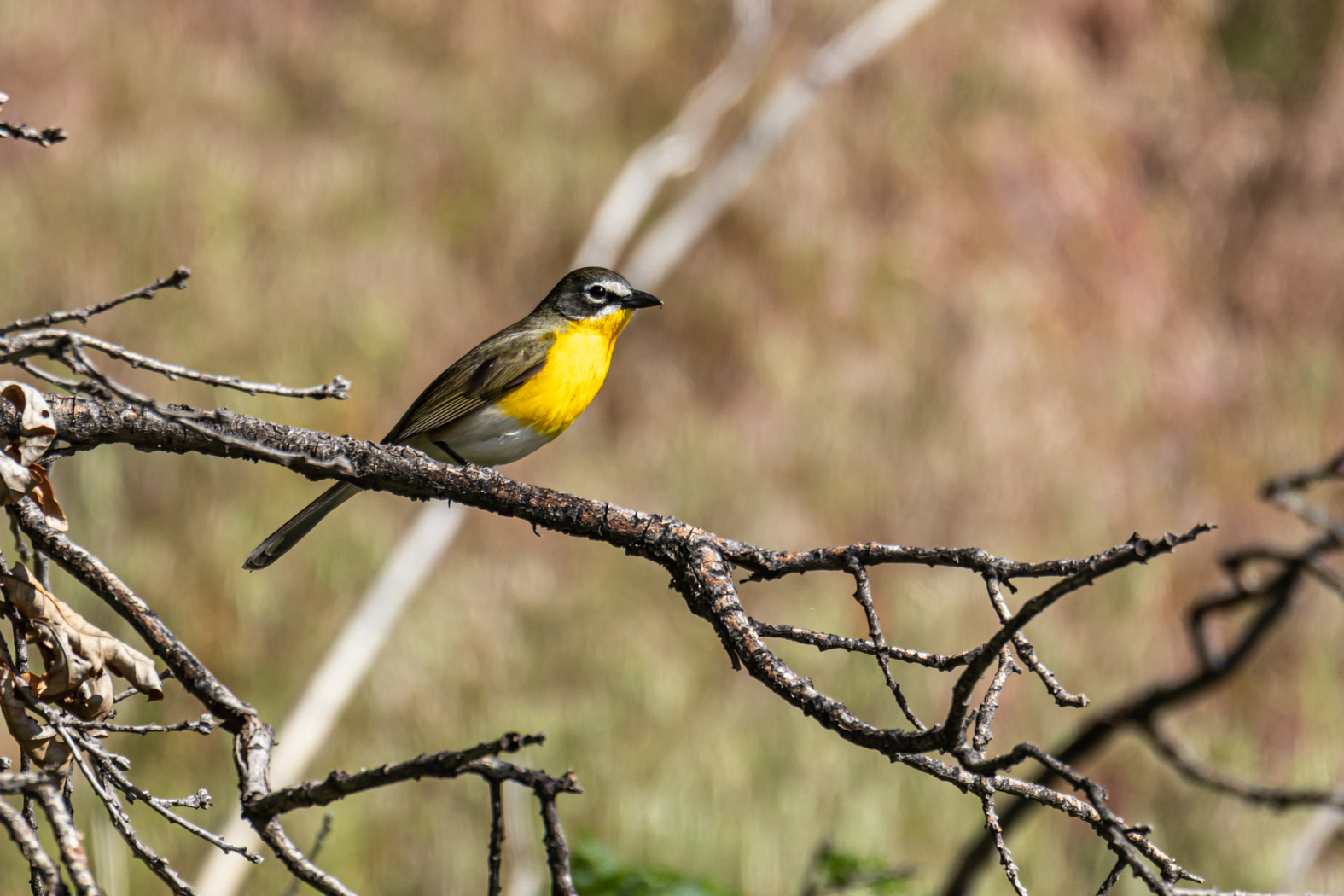
Yellow-breasted Chat. Photo courtesy of Bob Magee.
Yellow was definitely the color of the day. By far, the most numerous bird we encountered was the Yellow Warbler. The brilliant, bright yellow males with their brick-red breast stripes were everywhere singing their “Sweet, sweet, sweeter than sweet!” songs from both high and low in the canopy. Next door at the Audubon Nature Center at Chatfield, this is the bird that is most frequently caught during bird banding. Yellow Warblers are most commonly found in wet areas such as at the edges of streams or marshes.
Normally skulky, we got fantastic looks at the Yellow-breasted Chat, an olive-backed bird with a bright yellow breast and throat, thick bill, and loud “chatty” voice. The chat used to be formally lumped in with the warblers, but has since been split off into its own family of which it is the only member. There just literally is nothing else like the Yellow-breasted Chat!
Other yellow birds seen were both American and Lesser Goldfinches, and Cedar Waxwings (hey, the tip of the tail counts!).
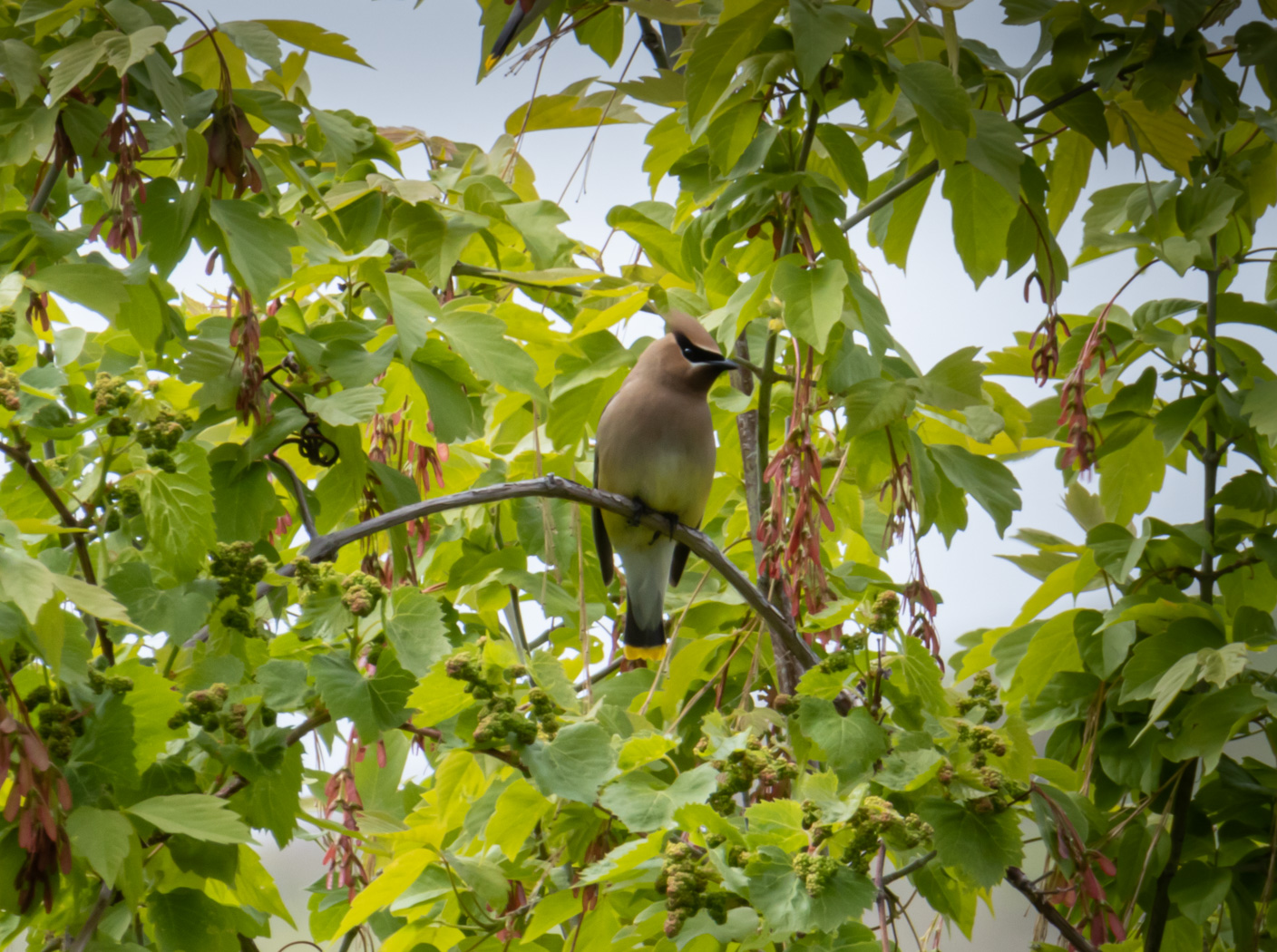
Cedar Waxwing. Photo courtesy of Bob Magee.
Another normally secretive bird that you’re more likely to hear than see is the Gray Catbird. However, that wasn’t the case on Saturday! We had a dapper little catbird male singing right out in the open for us. Both sexes are slate gray with little black caps and a flush of maroon under the tail. Named for the cat-like “meow” it often gives at the end of repeated phrases, the Gray Catbird is a mimic like the Northern Mockingbird.
One of the most exciting birds of the day was the Lazuli Bunting. In the same family as the Northern Cardinal, the Lazuli Bunting male is a beautiful, blue bird with an orange sherbet-colored breast. Their stout, conical bills are perfectly suited for cracking seeds. The breath-taking blue of the Lazuli Bunting’s feathers is due to the structure of the feathers rather than being a pigment in the feather itself. Most blues and greens in bird feathers are “structural colors.”
Near the end of our walk we ran across an id challenge: a silent flycatcher sitting on a post. Flycatchers are notoriously difficult to identify when not singing. This one was a large flycatcher with a slight head crest and no eyering so the initial thought was that it was a Western Wood-Pewee, but when it turned around we got a great look at its dark “vest.” This “vest” is characteristic of the Olive-sided Flycatcher, which is in the same genus as the Western Wood-Pewee. Mystery solved!
In all, we observed 35 species, an incredibly successful day.
Waterton Canyon–from Waterton Rd to overhead pipes, Jun 1, 2019
35 species
Mallard 1
Common Merganser 2
Mourning Dove 3
Black-chinned Hummingbird 2
Broad-tailed Hummingbird 7
American White Pelican 2
Turkey Vulture 1
Red-tailed Hawk 2
Northern Flicker (Red-shafted) 4
American Kestrel 2
Olive-sided Flycatcher 1
Western Wood-Pewee 2
Warbling Vireo 2
Woodhouse’s Scrub-Jay 2
Violet-green Swallow 12
Barn Swallow 4
Cliff Swallow 8
Black-capped Chickadee 2
White-breasted Nuthatch 2
House Wren 7
Blue-gray Gnatcatcher 2
American Dipper 1
Gray Catbird 2
European Starling 1
Cedar Waxwing 10
Lesser Goldfinch 7
American Goldfinch 4
Lark Sparrow 1
Song Sparrow 1
Spotted Towhee 5
Yellow-breasted Chat 2
Western Meadowlark 1
Brown-headed Cowbird 2
Yellow Warbler 7
Lazuli Bunting 2
